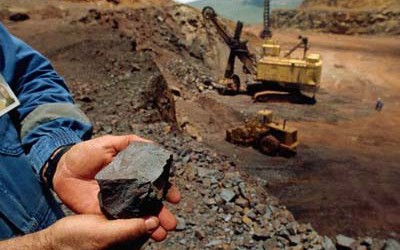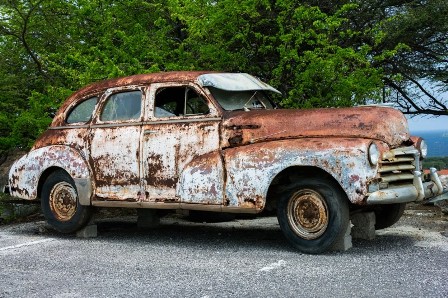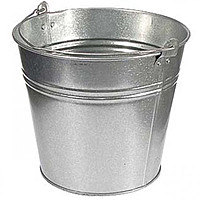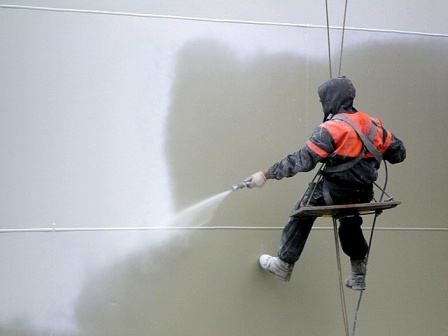Categories: Featured Articles » Interesting Facts
Number of views: 14264
Comments on the article: 0
Why do metals rust?
 What is common between a rusty nail, a rusted bridge, or a leaking iron fence? Why do iron structures and iron products rust in general? What is rust per se? We will try to give answers to these questions in our article. Let us consider the causes of metal rusting and methods of protection against this natural phenomenon that is harmful to us.
What is common between a rusty nail, a rusted bridge, or a leaking iron fence? Why do iron structures and iron products rust in general? What is rust per se? We will try to give answers to these questions in our article. Let us consider the causes of metal rusting and methods of protection against this natural phenomenon that is harmful to us.
Rust causes
It all starts with metal mining. Not only iron, but, for example, aluminum, and magnesium are mined initially in the form of ore. Aluminum, manganese, iron, magnesium ores do not contain pure metals, but their chemical compounds: carbonates, oxides, sulfides, hydroxides.
These are chemical compounds of metals with carbon, oxygen, sulfur, water, etc. There are one, two, and pure metals in nature — platinum, gold, silver — precious metals — they occur in the form of metals in a free state, and do not tend to the formation of chemical compounds.

However, most metals are not free under natural conditions, and in order to free them from the starting compounds, it is necessary to melt the ores, thereby reducing pure metals.
But smelting metal-containing ore, although we get the metal in its pure form, it is still an unstable state, far from natural. For this reason, a pure metal under normal environmental conditions tends to return to its original state, that is, to oxidize, and this is corrosion of the metal.

Thus, corrosion is a natural destruction process for metals that occurs under conditions of their interaction with the environment. In particular, rusting is the process of the formation of iron hydroxide Fe (OH) 3, which proceeds in the presence of water.
But the natural fact plays into people's hands that the oxidation reaction in the atmosphere we are used to is not very fast, it goes at a very low speed, so bridges and planes do not collapse instantly, and pots do not crumble in front of our eyes in ginger powder. In addition, corrosion can, in principle, be slowed down by resorting to some traditional tricks.
For example, stainless steel does not rust, although it consists of iron, which is prone to oxidation, it is nevertheless not covered by red hydroxide. And the thing here is that stainless steel is not pure iron, stainless steel is an alloy of iron and another metal, mainly chromium.
In addition to chromium, nickel, molybdenum, titanium, niobium, sulfur, phosphorus, etc. can be included in the composition of steel. Adding additional elements to alloys that are responsible for certain properties of the resulting alloys is called alloying.
Ways to protect against corrosion
As we noted above, the main alloying element added to ordinary steel to give it anti-corrosion properties is chromium. Chrome oxidizes faster than iron, that is, it takes a hit on itself. On the surface of stainless steel, thus, first appears a protective film of chromium oxide, which has a dark color, and not as loose as ordinary iron rust.
Chromium oxide does not pass through aggressive environmental ions that are harmful to iron, and the metal is protected from corrosion, like a durable hermetic protective suit. That is, the oxide film in this case has a protective function.
The amount of chromium in stainless steel is usually not lower than 13%, nickel is slightly less in stainless steel, and other alloying additives are found in much smaller amounts.
It is thanks to the protective films that take the environmental impact first, that many metals are resistant to corrosion in various environments.For example, a spoon, plate or pan, made of aluminum, never really shines, they, if you look closely, have a whitish hue. This is just aluminum oxide, which is formed by the contact of pure aluminum with air, and then protects the metal from corrosion.
The oxide film appears on its own, and if you clean the aluminum pan with sandpaper, after a few seconds of gloss the surface will turn whitish again - aluminum on the cleaned surface will again oxidize under the influence of atmospheric oxygen.
Since an alumina film is formed on it itself, without special technological tricks, it is called a passive film. Such metals, on which an oxide film forms naturally, are called passivating. In particular, aluminum is a passivated metal.
Some metals are forced into a passive state, for example, higher iron oxide - Fe2O3 is able to protect iron and its alloys in air at high temperatures and even in water, which neither red hydroxide nor lower oxides of the same iron can boast of.
There are passivation and nuances in the phenomenon. For example, in strong sulfuric acid, instantly passivated steel is resistant to corrosion, and in a weak solution of sulfuric acid, corrosion will begin immediately.
Why it happens? The answer to the apparent paradox is that in strong acid, a passivating film instantly forms on the surface of stainless steel, since an acid with a higher concentration has pronounced oxidizing properties.
At the same time, a weak acid does not oxidize the steel quickly enough, and the protective film does not form, it just starts corrosion. In such cases, when the oxidizing medium is not aggressive enough, to achieve the effect of passivation resort to special chemical additives (inhibitors, corrosion inhibitors) that help the formation of a passive film on the metal surface.

Since not all metals are prone to the formation of passive films on their surface, even by force, the addition of moderators to the oxidizing medium simply leads to the preventive retention of the metal under conditions of reduction, when oxidation is energetically suppressed, that is, when the additive is present in an aggressive environment, it is energetically disadvantageous .
There is another way to keep the metal in the recovery environment, if it is not possible to use an inhibitor, use a more active coating: the galvanized bucket does not rust, since the zinc of the coating corrodes iron in contact with the environment, that is, it takes a hit on itself, being a more active metal , zinc is more likely to enter a chemical reaction.
The bottom of the ship is often protected in the same way: a piece of tread is attached to it, and then the tread is destroyed, and the bottom remains unharmed.

Electrochemical corrosion protection of underground utilities is also a very common way to combat the formation of rust on them. The reduction conditions are created by applying a negative cathode potential to the metal, and in this mode, the metal oxidation process will no longer be able to proceed simply energetically.
One may ask why surfaces at risk of corrosion simply do not paint, why not simply coat a part that is vulnerable to corrosion each time with enamel? What are the different ways for?
The answer is simple. The enamel may be damaged, for example, car paint may break off in an inconspicuous place, and the body will begin to gradually but continuously rust, since sulfur compounds, salts, water, oxygen, will come to this place, and as a result, the body will collapse.
To prevent such a development of events, resort to additional anti-corrosion treatment of the body. A car is not an enameled plate that can be thrown away if an enamel is damaged and bought a new one ..
Current state of affairs
Despite the apparent knowledge and elaboration of the phenomenon of corrosion, despite the versatile methods of protection used, corrosion still poses a certain danger. Pipelines are destroyed and this leads to emissions of oil and gas, planes fall, the train crashes. Nature is more complex than it might seem at first glance, and humanity has yet to explore many more aspects of corrosion.
So, even corrosion-resistant alloys prove to be stable only in certain predictable conditions, for the operation in which they were originally intended. For example, stainless steels do not tolerate chlorides, and are affected by them - peptic, pitting and intercrystal corrosion occur.
Outwardly, without a hint of rust, the structure can suddenly collapse if small, but very deep lesions form inside. Microcracks penetrating the thickness of the metal are invisible from the outside.
Even an alloy not susceptible to corrosion can suddenly crack, being under prolonged mechanical stress - just a huge crack will suddenly destroy the structure. This has already happened around the world with metal building structures, mechanisms, and even with airplanes and helicopters.
See also at bgv.electricianexp.com
:
